Top Healthcare Industry Challenges in 2023: What We’ve Learned

Some look at healthcare industry challenges and only see obstacles. At Nasium Training, we take a different approach. We view challenges as opportunities to learn how to help make the industry more resilient.
To do this, we need to understand what may not have worked in the past and why, what might work better in the future with a minor adjustment, and what areas need a complete overhaul to make the industry stronger. With these three goals in mind, let’s look at the top challenges faced in the healthcare industry in 2023, along with their key takeaways.
Challenge #1: A Continued Public Health Emergency
The COVID-19 public health emergency didn’t officially expire until May 11, 2023.1 So, many healthcare organizations were still facing challenges from the pandemic more than three years after it began. This included service disruptions.
While disruptions to routine health service delivery were reduced over years before, around 23% of services globally still faced pandemic-related effects early in 2023 according to a World Health Organization survey.2 These effects were attributed to continued issues with both supply and demand. This survey also revealed that many health systems felt that longer-term recovery required additional funding.
The pandemic hit many healthcare organizations hard financially. U.S. hospitals faced a 20.6% increase in medical supply expenses and a 36.9% increase in drug expenses over pre-pandemic levels, also dealing with increased costs related to training staff on COVID protocol, securing large quantities of personal protective equipment, reconfiguring physical spaces to meet isolation guidelines, and hiring contract labor to help care for the growing patient base – all while facing a reduced number of patients due to high cancelation and postponement rates for nonelective services.3
educed revenues and higher costs make it hard to operate a healthcare organization profitably, if at all. Case in point: at least eight hospitals closed in 2023 due to reduced patients and increased financial issues.4 Another 72 hospitals closed individual departments or quit providing services at their facilities in 2023.5
Challenge #2: Staffing Shortages
Staffing shortages were another major challenge facing the healthcare industry in 2023. This issue was so concerning that, on February 16, 2023, the American Hospital Association for the Committee on Health, Education, Labor and Pensions of the U.S. Senate issued a statement asking: “Where do we go from here?”6
In this statement, the committee reported that the healthcare industry had already been facing major challenges that were making it difficult to grow and retain a healthcare workforce. Then the pandemic hit, which “only served to deepen and accelerate” those challenges, in large part due to worsening workers’ emotional health and well-being, causing some to want to leave the profession completely.4
This aligns with findings of a 2023 Study on Allied Health Workforce Retention commissioned by UMA Education, Inc. and ACUPOLL ® Precision Research, Inc. After surveying 1,000 past, current, and prospective healthcare employees, it was discovered that 60% of those currently working in the field expected to leave their jobs within five years, citing concerns about pay, job stress, workplace demands, and being understaffed.7
Challenge #3: Health and Healthcare Disparities
In 2023, the healthcare industry also faced challenges related to disparities in both patient health and their access to healthcare. The National Institute on Minority Health and Health Disparities shares that health disparities exist for several populations, some of which include:8
- Racial and ethnic minorities (American Indian, Alaska Native, Asian, Black or African American, and Native Hawaiian or Pacific Islander)
- Sexual and gender minority groups
- Individuals with lower socioeconomic status
- People living in underserved rural communities
- People with disabilities
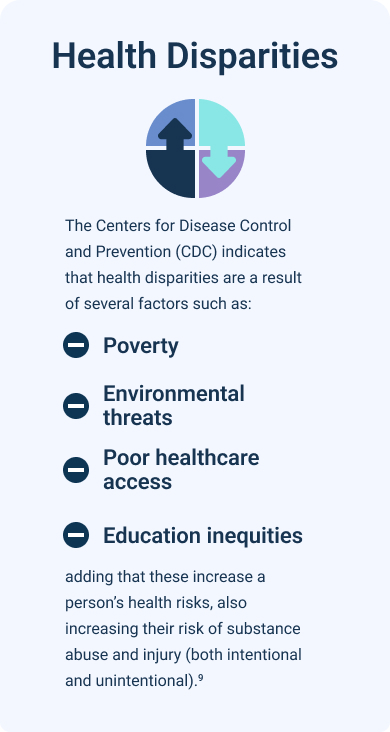
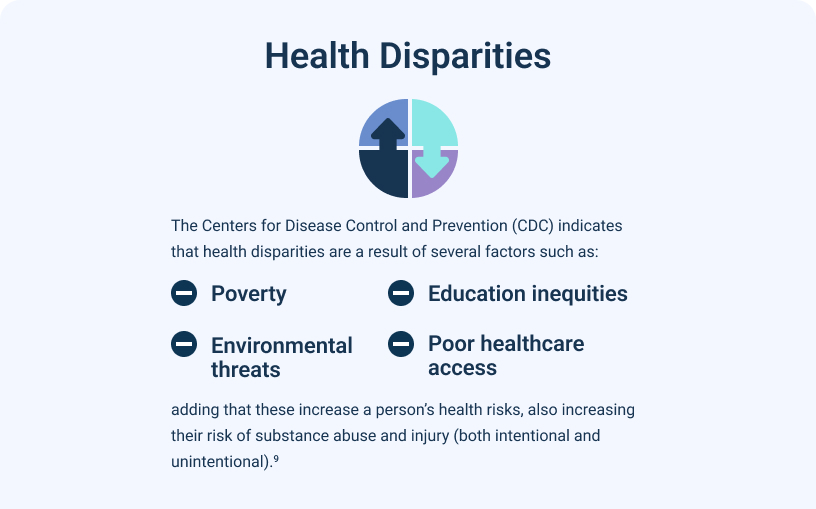
The Centers for Disease Control and Prevention (CDC) indicates that health disparities are a result of several factors such as poverty, environmental threats, poor healthcare access, and education inequities, adding that these increase a person’s health risks, also increasing their risk of substance abuse and injury (both intentional and unintentional).
In regard to healthcare disparities, in December 2023, the Agency for Healthcare Research and Quality published its 2023 National Healthcare Quality and Disparities Report. This report cited concerns over supplying adequate healthcare delivery to an aging population, a population becoming more ethnically and racially diverse, and the growing population in metropolitan areas.10
One of the concerns discussed was that while demand for some services had risen, the healthcare workforce responsible for meeting these demands shrank. Workers in healthcare occupations requiring an associate degree or lower – such as medical assistants and phlebotomists – decreased from 2.26 million to 1.55 million between January and April 2020 and had only partially recovered by the end of 2022.8
Challenge #4: Technological Advancements
Technological devices and systems are constantly evolving. In many cases, this can help advance the healthcare industry. In 2023, health-related advancements included:11
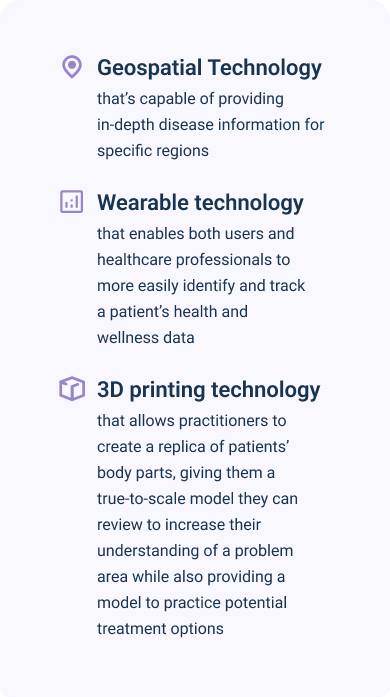
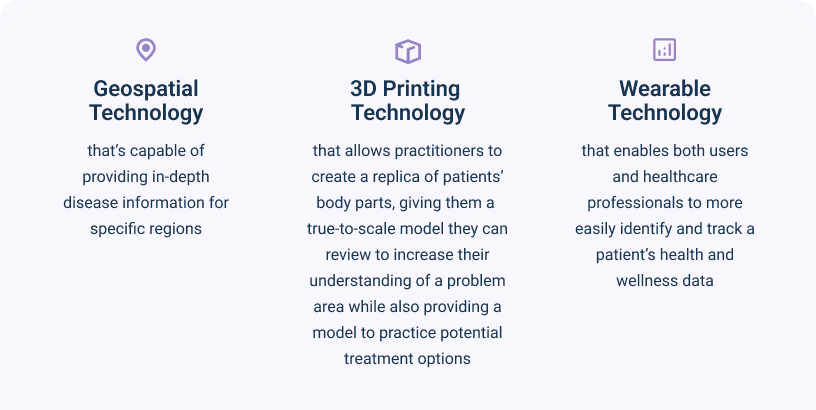
While advances such as these offer potential benefits for patients and practitioners alike, this doesn’t mean that they don’t come without challenges. New devices can often be costly for healthcare organizations and must be utilized in a way that ensures compliance with regulatory guidelines – not to mention that practitioners don’t have a lot of time to learn how to properly use new equipment, which may contribute to usage errors.12
Challenge #5: Worsening Mental Health
Last but by no means least, the healthcare industry faced many challenges related to mental health in 2023. This was evidenced by the American Psychological Association’s Stress in America 2023 report.
This report included data collected from more than 3,000 adults and found that mental health has declined for many Americans. It indicated that 45% of respondents reported having a mental illness, representing a 14% increase from data provided in 2019, with nearly one in four respondents rating their average stress levels between an eight and 10 on a 10-point scale, which was a 19% increase over 2019 data.13
This report attributed worsening mental health largely to the stress the COVID-19 pandemic placed on many. Several researchers agree with this assessment, adding that the coronavirus wasn’t only detrimental to public mental health but also the mental health of healthcare workers.
A systematic review and meta-analysis published in Frontiers in Psychology on January 27, 2023, looked at 19 studies involving frontline healthcare workers and found the following prevalence rates:14
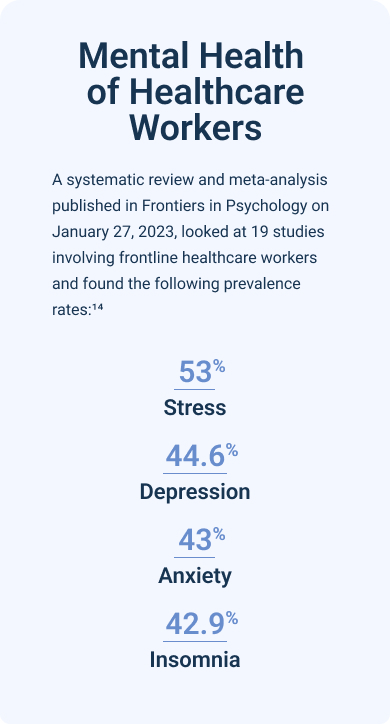
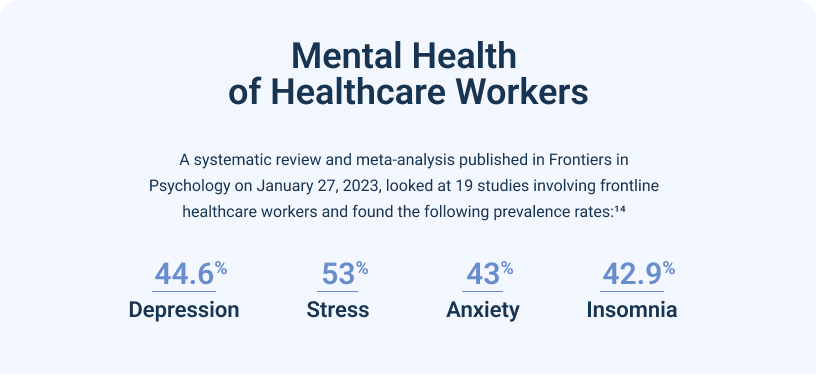
A 2023 study published in Sustainability further noted that, in addition to increased stress leading to reduced well-being in healthcare workers, it also contributes to psychological distress and discomfort that often appears in mental health issues such as burnout.15
Key Takeaways: What We’ve Learned
Certainly, the healthcare industry faced numerous challenges in 2023. In addition to dealing with the continued effects of the pandemic, other top issues faced during the year included staffing shortages, health and healthcare disparities, technological challenges, and challenges in mental health.
These challenges cover a wide range of areas within the healthcare industry, from the financial health of entire organizations to equity in healthcare treatment options for individual patients. This helps highlight the notion that there’s no quick fix to the issues this industry faces.
Instead, we must look for potential solutions that may offer the biggest “bang for their buck.” One of these solutions is to upskill and reskill healthcare workers.
The Solution: Healthcare Upskilling and Reskilling Programs
Preparing workers with the education and skills needed to perform their jobs more efficiently via upskilling can help reduce stressors related to a large workload. More efficient completion of certain job processes can leave more time to handle other duties with more involved processes, therefore requiring more time.
Upskilling can also help healthcare professionals learn how to operate technologically advanced devices. This enables them to stay current in their roles while offering patients access to technology that may help them live a longer or higher quality of life.
Preparing workers with the education and skills needed to perform new roles (reskilling) can also help the healthcare industry overcome several of these challenges. If there’s a shortage of workers in medical assistant roles, for example, medical administrative assistants can be reskilled to fill these positions. Reskilling may also reduce mental health issues related to workers feeling overworked and understaffed.
Offering healthcare workers access to upskilling and reskilling may have another advantage: improved worker retention. The Study on Allied Health Workforce Retention also found that if employees were offered training that provided a clear career path, 75% said they’d stay at their job longer.7
Nasium Training Offers Customizable Upskilling and Reskilling Programs,
Nasium Training offers a variety of upskilling and reskilling training programs for healthcare workers. These programs can be customized based on your organization's needs and skills gaps, providing a more personalized solution.
Nasium Training programs are designed to help solve today’s healthcare workforce challenges through both clinical and non-clinical training. Several courses are offered completely online, offering flexibility for the working learner.
Contact us today to learn more about how we can help you with the healthcare challenges you face. We look forward to building a partnership that promotes a stronger healthcare industry one organization and one employee at a time.
1 U.S. Department of Health and Human Services. COVID-19 Public Health Emergency. https://www.hhs.gov/coronavirus/covid-19-public-health-emergency/index.html
2 World Health Organization. New Survey Results Show Health Systems Starting to Recover from Pandemic https://www.who.int/news/item/02-05-2023-new-survey-results-show-health-systems-starting-to-recover-from-pandemic
3 Li K, Al-Amin M, Rosko MD. Early Financial Impact of the COVID-10 Pandemic on U.S. Hospitals. Journal of Healthcare Management. https://www.ncbi.nlm.nih.gov/pmc/articles/PMC10306278/
4 Becker’s ASC Review. 8 Hospital Closures in 2023. https://www.beckersasc.com/asc-news/8-hospital-closures-in-2023.html
5 Becker’s Hospital CFO Report. 72 Hospitals Closing Departments or Ending Services. https://www.beckershospitalreview.com/finance/61-hospitals-closing-departments-or-ending-services.html
6 American Hospital Association. AHA Senate Statement on “Examining Health Care Workforce Shortages: Where Do We Go From Here?” https://www.aha.org/testimony/2023-02-15-aha-senate-statement-examining-health-care-workforce-shortages-where-do-we-go-here
7 Based on 1,000 participants surveyed in the Study on Allied Health Workforce Retention commissioned by UMA Education, Inc. and ACUPOLL ® Precision Research, Inc., February 3-22, 2023.
8 National Institute on Minority Health and Health Disparities. Minority Health and Health Disparities: Definitions and Parameters. https://www.nimhd.nih.gov/about/strategic-plan/nih-strategic-plan-definitions-and-parameters.html
9 Centers for Disease Control and Prevention. Health Disparities. https://www.cdc.gov/healthyyouth/disparities/index.htm
10 Agency for Healthcare Research and Quality. 2023 National Healthcare Quality and Disparities Report. https://www.ahrq.gov/sites/default/files/wysiwyg/research/findings/nhqrdr/2023-nhqdr-es.pdf
11 University of Southern California Keck School of Medicine. 5 Public Health Technologies to Revolutionize Health Care Delivery. https://mphdegree.usc.edu/blog/public-health-technology
12 University of Southern California Sol Price School of Public Policy. https://healthadministrationdegree.usc.edu/blog/3-challenges-of-technology-implementation-in-healthcare
13 American Psychological Association. Stress in AmericaTM 2023: A Nation Grappling with Psychological Impacts of Collective Trauma. https://www.apa.org/news/press/releases/2023/11/psychological-impacts-collective-trauma
14 Tong J et al. Effects of COVID-19 Pandemic on Mental Health Among Frontline Healthcare Workers: A Systematic Review and Meta-Analysis. Frontiers in Psychology. https://www.frontiersin.org/articles/10.3389/fpsyg.2022.1096857/full
15 Rania N, Coppola I, Brucci M. Mental Health and Quality of Professional Life of Healthcare Workers: One Year After the Breakout of the COVID-19 Pandemic. Sustainability. https://www.mdpi.com/2071-1050/15/4/2977
